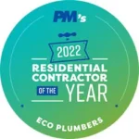Introduction
When your home suddenly goes cold in the middle of winter, the first reaction is often frustration and concern. A lack of heat can make your space uncomfortable and even unsafe. While modern heating systems are reliable, they can still fail due to a variety of reasons, from minor electrical issues to more serious mechanical breakdowns. Knowing what to do when your furnace stops working can save you time, money, and stress. By understanding the basics of furnace troubleshooting, you can determine whether a quick fix is possible or if professional furnace repair is needed.
What to Do When Your Furnace Stops Heating
1. Check Your Thermostat Settings
One of the most common reasons your furnace doesn’t produce heat is simply incorrect thermostat settings. Before calling for repairs, make sure the thermostat is set to “heat” and not “cool.” Double-check the temperature setting to ensure it’s higher than the current room temperature. Sometimes, low battery power or programming errors can prevent the thermostat from communicating with the furnace. Replace the batteries if needed, and reset the device to eliminate glitches. Smart thermostats can also lose Wi-Fi connection, causing heating delays. Ensuring your thermostat works properly is the first and easiest step in resolving heating issues.
2. Inspect the Circuit Breaker and Power Supply
Furnaces require electricity to operate, even if they primarily run on gas. If your unit suddenly shuts down, check your electrical panel for a tripped circuit breaker. Reset it if necessary, but if it trips again immediately, there could be an electrical fault that requires professional attention. Also, make sure the power switch near your furnace is turned on, as it may have been accidentally flipped off during cleaning or maintenance. Without power, even the best furnace installation won’t keep your system running, so verifying these simple details can prevent unnecessary service calls.
3. Examine the Air Filter
A clogged air filter is one of the leading causes of furnace malfunction. Over time, dust, debris, and pet hair can accumulate, blocking airflow and forcing the system to work harder. This strain can cause overheating and automatic shutdowns. Check your filter monthly, especially during peak usage seasons, and replace it every one to three months depending on your home’s environment. Clean filters ensure efficient heating and help prolong the lifespan of your equipment. Regular furnace maintenance that includes filter replacement can prevent unexpected no-heat situations and improve overall indoor air quality.
4. Look for Pilot Light or Ignition Problems
If you have an older furnace, it may rely on a pilot light to ignite the burner. If the pilot is out, your system won’t produce heat. Relighting it carefully according to the manufacturer’s instructions often resolves the problem. However, if the pilot light repeatedly goes out, it could indicate a faulty thermocouple or a gas supply issue. For newer models with electronic ignition systems, listen for clicking sounds when the furnace attempts to start. No sound could suggest ignition control failure, which requires professional service to safely diagnose and repair.
5. Inspect Gas Supply and Valves
For gas-powered furnaces, a disruption in the gas line can halt heat production. Make sure the gas valve connected to your furnace is fully open. You can usually find this valve near the base of the unit. If you suspect a gas leak, leave your home immediately and contact your gas company or emergency services. Never attempt to repair a gas issue yourself. Regular maintenance often includes checking gas pressure and valve conditions to prevent dangerous situations. Maintaining consistent gas flow ensures your system operates safely and efficiently throughout the heating season.
6. Check Air Vents and Ductwork
Even when your furnace is running, blocked vents or leaky ductwork can make it seem like there’s no heat. Walk through your home and make sure all supply and return vents are open and unobstructed by furniture or curtains. Inspect ducts for visible gaps, holes, or loose connections that could be allowing warm air to escape before reaching living spaces. Proper air circulation is crucial for balanced heating. Scheduling professional duct cleaning and sealing as part of your furnace maintenance plan helps maintain strong airflow and ensures consistent warmth throughout your home.
7. Listen for Unusual Sounds
A functioning furnace should operate quietly with minimal noise. If you hear banging, rattling, or squealing, it’s a sign that something is wrong internally. Loose belts, broken motor bearings, or debris caught in the blower can disrupt operation. Grinding or whining noises could also mean the blower motor is struggling to run efficiently. Ignoring these sounds may lead to more severe damage. Calling a professional for furnace service at the first sign of strange noises can prevent costly breakdowns and extend the system’s lifespan. Early intervention is always better than emergency repairs.
8. Call a Professional for Diagnosis and Repair
If you’ve checked all basic troubleshooting steps and your furnace still won’t turn on, it’s time to contact a licensed HVAC technician. Professional service involves a thorough inspection of electrical systems, gas connections, and internal components. A certified technician can identify the root cause quickly and safely, ensuring your home returns to a comfortable temperature. They can also recommend whether repairs are sufficient or if you should consider upgrading to a more energy-efficient model through a new furnace installation. Investing in professional service now can prevent frequent breakdowns and improve your heating system’s long-term performance.
A cold home doesn’t always mean a complete furnace failure. Many no-heat problems can be resolved through simple checks like thermostat adjustments, filter replacements, or circuit resets. However, for more complex issues involving ignition systems, gas supply, or electrical faults, it’s essential to rely on trained professionals. Consistent maintenance and timely service appointments are the keys to preventing breakdowns before they happen. If your system is old or inefficient, a new furnace installation may be the best way to restore comfort and reduce energy costs. With proper care, your furnace will deliver reliable warmth season after season.
Conclusion
Don’t let a broken furnace leave you in the cold. Schedule your professional furnace service with our team at Eco Plumbers, Electricians, and HVAC Technicians at (855) 326-7586 to ensure lasting comfort and efficient performance all winter long.
📌Eco Service Center—expert plumbing, electrical & HVAC services to keep your home safe, energy-efficient, and running at its best.










